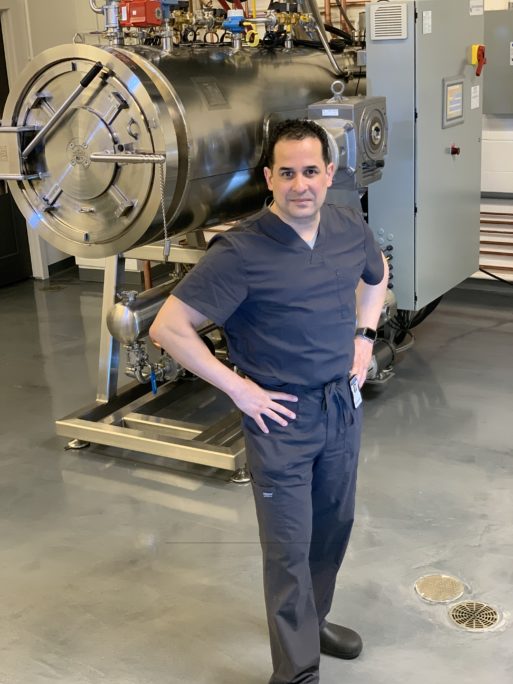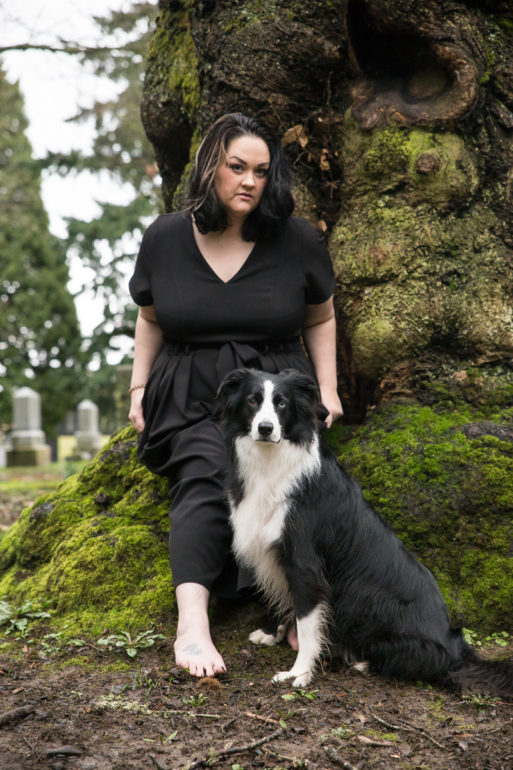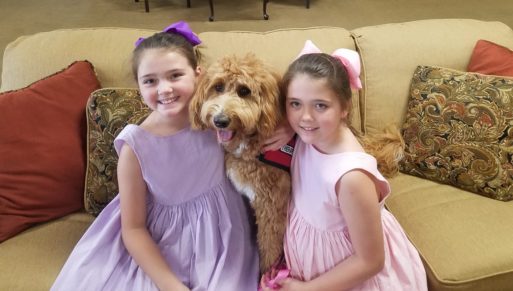
3,383,729 deaths were registered in the U.S. in 2020 (CDC)
What began as a civil war era means to transport soldiers’ bodies home for burials has grown into a multi-billion-dollar service industry catering to the dead. For the last century, the evolution of undertakers to morticians to funeral directors has been the cornerstone of all death-related services.
It can be expensive to die. The average cost of a funeral and burial in the U.S. currently ranges from $7,000 to $9,000. No longer bound by loyalty to neighborhood funeral homes, consumers are doing more homework when planning for their death or that of a loved one.
Comparison shopping is easier thanks to the Federal Trade Commission (FTC) funeral rule established in 1980. Although still not well-known, this rule requires funeral professionals to provide a comprehensive price list to consumers. This is an itemized catalog of fees that includes things like body retrieval, storing, embalming, caskets, graveyard liners, burial fees, facility rental, and more. It can be obtained verbally via phone or written copies must be provided by the funeral home whenever a potential client visits the establishment. Less than a third of funeral homes currently post this list online.

Josh Slocum of the FCA says funeral
directors see themselves as
indispensable to the death industry.
Josh Slocum of Funeral Consumer Alliance is trying to change that. When the FTC announced in 2020 that they would consider updating this decades-old rule, Slocum was quick to offer public comment. Although it has yet to decide on the matter, he says seeking more transparency is not an easy battle in this field. “Funeral directors consider themselves indispensable to the death industry. Some are threatened by legislative changes or competition. ”
But if they wish to remain viable in this industry, funeral directors will need to evolve beyond stagnant traditional burial sales and tactics to meet new consumer demands. The advent of technology, life celebrations, cremations and biodegradable alternatives will be the driving force behind future marketplace growth.
The Boomer Factor
By the year 2030, 71.5 million baby boomers will be age 65 or older. That is more than double this current demographic today. Baby boomers are commonly well-educated, navigate the internet well, and have become the most cost-conscious consumers in the U.S. Their deaths in the U.S are estimated to peak in 2044.
It is no surprise that many boomers do not wish to be buried alongside their ancestors. This generation did not marry, raise children, and die in the same place as did generations before them. As a result, tens of thousands of middle-aged Americans are selling their pre-paid burial plots. Most cemeteries will not buy them back, so unwanted plots are posted for sale on sites like plotbrokers.com and gravesales.com, and even listed on eBay. The problem is that no one is buying them.
Cemetery burial plots are generally the most expensive part of any burial. The U.S. average cost for a public plot is $525 to $2,500 while private plots range from $2,000-$2,500 for burial. This does not include costs for a coffin, interment, headstone or marker, grave liner, or maintenance. Not to mention, the cost of the funeral services.
Boomers are fast embracing cremation as the cheaper alternative to burial. Even the Pope gave his blessing on the matter in 2016, simply advising families to inter the ashes rather than scatter or save them. In the 1960s, cremation accounted for only 5% of deaths. In 2020, 56% of the deceased were cremated. That number is expected to rise thanks to greater social acceptance, decreasing costs, and growing access to direct cremation services. The National Funeral Directors Association projects that cremation will account for nearly 80% of postmortem choices in the year 2040.
Mike Nicodemus, vice president of NFDA cremation services stated, “Baby Boomers have been a significant factor in this shift and their preferences will inform decisions made by the funeral profession for years to come.”
The Zoomer Factor

Millennials born 1981 to 1996 and Generation Z, or Zoomers, born between 1997 and 2012, are poised to challenge the death industry’s future.
Consumer demands stretch well beyond the boomers. Generation Z or Zoomers, and Millennials are entering their 20s and 30s respectively. And they are concerned about climate change and the future of the planet. As a result, eco-friendly alternatives including human composting and green burials are already on the rise.
The number of natural, conservation or hybrid cemeteries in the U.S. has grown steadily over the past five years. There are 350 natural burial locations in the majority of states, excluding Alaska, Delaware, and Kentucky.

CANA member, Philip Flores, says, “Families are not just relying on funeral homes to advise them on greener options to burial.”
But these next generations are particularly strong advocates for aquamation, or alkaline hydrolysis. Philip Flores, Jr. is president of Cremation by Water in Arlington Heights, Illinois, and a member of the Cremation Association of North America. Flores contends that the rising number of individuals who end up choosing aquamation is due to the younger generation in their family who educate and influence them to do so after researching greener options.
According to CANA, alkaline hydrolysis uses far less energy than cremation and has a much smaller carbon footprint. A mixture of warm water and alkaline or salts breaks down skin, hair, and tissue into a non-toxic liquid state, leaving only the bones behind. The bones are then refined into powder remains and returned to the next of kin. Flores says they can also be safely used to fertilize the earth.
Slocum agrees that alkaline hydrolysis, or AH, is growing consumer demand. He believes this eco-friendly option will have a sizeable impact on the funeral industry over the next decade or so: “Alkaline hydrolysis will most likely make inroads. From the consumer’s point of view, it really does replace cremation, wasting less energy. Some like it for aesthetic or emotional reasons too.”

Meadow refers to aquamation as a final spa day for your body, stating, “The process leaves nothing behind but amino acids, peptides, and proteins; all the funky stuff that makes plants happy.”
Melissa Meadow refers to herself as a funeral industry consultant on modern professional practices. Meadow initially attended mortuary school in her early 20s before returning 10 years later to complete the task. Now in her 40s, she is a proponent of alternatives to traditional burial, which Meadow believes harms the environment.
Although welcoming the idea of green burial or human composting, Meadow touts alkaline hydrolysis as the most eco-friendly option available to date. Although more expensive than cremation and not yet legal in every state, Meadow says it does not mean you can’t get it if you really want it: “If a request is legal, moral, and ethical, I help families to achieve their goals.”
Interest in AH peaked following media coverage of the death of Archbishop Desmond Tutu of South Africa. The Nobel Peace Prize recipient requested aquamation as his final wish to combat climate change. Tutu’s death prompted awareness about alkaline hydrolysis on a national and global scale.
According to Flores, “Social media is making a tremendous impact in the way people discover this process, whether family members or funeral homes.”
When Death Becomes the Social (Media) Norm

“Our industry is changing. We are not as traditional as we used to be,” says Beatrice Lewanduski-Lecesse, a funeral director for more than 40 years.
Beatrice Lewanduski-Lecesse, NFDA at-large representative and funeral director for D’Andrea Brothers Funeral Home in Copiague, NY, acknowledges the industry’s technological evolution: “We are embracing a younger generation that is tech-savvy and uses it for everything. They can be on Facebook, Twitter or Yelp; generally almost every type of media outlet out there. Some are even on TikTok, highlighting their work.”
In the past decade, the majority of funeral homes created websites and memorial pages. In a world where Google reviews can make or break a business, funeral homes around the country are continuing to step up their online presence to gain consumer trust. They are also competing against companies that provide direct cremation services. You can even order your cremation online using services such as Cremstar, and Tulip in the U.S. and Eirene in Canada. All of these options are making it harder for traditional funeral homes to survive.
Younger generation funeral directors, embalmers, and morticians have a stark advantage in reaching future consumers online because social media is their natural habitat. Meadow is known to her tens of thousands of fans as “the modern mortician.” She regularly shares candid photos and videos highlighting eco-alternatives to traditional burial on both Instagram and TikTok.

Eileen Hollis of Syracuse, New York, has gone viral, highlighting her work as a young mortician for 835,000 followers on TikTok
Meadow believes she paved the way for the Millenials and Zoomers now entering this industry. You can search #mortician or #funeralhome on TikTok to view hundreds of millions of posts on everything and anything related to death. Check out @mybloodygalentine, where a young mortician, Beckie-Ann Galentin, spotlights her cemetery tours across the country. Or join nearly a million TikTokkers @hollisfunerahome, where you can view an insightful behind-the-scenes peek at the mortuary profession with millennial funeral director Eileen Hollis of Hollis Funeral Home in Syracuse, New York.
Meadow laments that some older funeral professionals do not appreciate their younger counterparts’ candid style, nor the competition they exploit. She asserts that some progressive industry leaders are ostracized by conservative directors or corporations that do not want to see the industry’s secrets so widely broadcast.
But Meadow remains optimistic, continuing to educate the public on their ever-growing end-of-life choices: “When I wonder if I’m making a difference, I get a message from someone. A message of appreciation like: ‘Because of you, I learned something new.’ Or ‘you made me not afraid of death. It reinvigorates my soul.’ It makes the struggle worthwhile.”
Slocum has been in this industry long enough to know that new ways in an old industry are not always embraced. “There is always conflict between generations. Particularly with a more irreverent or very public approach. It’s very different from the previous cultural regime. We will see if social media has any bearing on the future.”
The Demise or Reprise of the Funeral Home?

Life celebrations can take place anywhere and at any time following the death of a loved one.
Lewanduski-Lecesse affirms that traditional services are waning, while more casual ceremonious affairs are on the rise. “A new generation are looking at funerals in a different light. People have caught on that the passing may not only be a solemn and altogether sad affair. it becomes a recognition of someone’s life, a celebration of that person’s life.”
And a recent NFDA report shows that more than 50% of respondents have attended a funeral, or life celebration, at a non-traditional location. This is not necessarily good news for 18,800 funeral homes operating throughout the U.S. today.
Slocum contends this is an opportunity for funeral directors to embrace change: “Funeral homes have always been designed for the customer comfort. Large Victorian homes were attractive to the middle and upper class. Now, that seems outdated. I think it’s a good business move for funeral homes to expand if they can do it.”

Funeral Director, Bob Arrington, welcomes new ideas to attract families. “We have always had the mindset to do things a little differently and see what the consumer wants next.”
Bob Arrington, director of Arrington Funeral Home in Jackson, Tennessee, agrees with this sentiment. Arrington is a first-generation funeral director, who has been adapting his business model in line with consumer trends since his start in 1995: “We never wanted it to look like a funeral home with pews and a pulpit. We made the space more versatile for visitors. I would try almost anything. If it worked, great. If not, I tried something else.
Newer funeral homes are designed to be larger and brighter spaces. They can resemble an atrium versus a home. Some of these contemporary facilities bill themselves as multi-event use space, where families can host funerals, weddings, retirement parties, or any other large event.
A few innovative industry leaders are even catering to your future death. Mourners can attend a DeParty, or celebration of life, to honor a person while they are still alive. Family and friends come to say their goodbyes to someone who is at the end of life due to terminal illness or disease.
Funeral Homes Serve Up More Than Just Space
Some funeral directors are fast becoming production managers to keep pace with tech-savvy consumer demands. There are companies across the U.S. that specifically design and install video equipment and lighting for the funeral industry to assist their transition.

Arrington Funeral Home furnishes audio and visual effects, so that every funeral feels unique.
Arrington was quick to precede the bandwagon. “Once DVDs became common, I had a vision to upgrade the video, audio, and lighting, so that every funeral would be a totally different experience. We even offered webcasting before it became a necessity during the pandemic.” He says that his tech-friendly funeral home attracts the younger folks, who are becoming more involved in funeral planning for family members who have died.
Funeral professionals are adding other ancillary services to lure grieving families into their homes. Many states have only recently lifted archaic laws that did not allow funeral homes to serve food or drinks. A few homes now feature hospitality rooms, as food generally cannot be served in the same room as the deceased. Most states still do not allow alcohol to be served inside funeral homes, but there are a few exceptions to that rule. Blount and Curry Funeral Home in Tampa Bay, Florida, opened a speak-easy room, so mourners can toast to their loved ones right on the premises.

Gracie, a grief therapy dog, brings much-needed comfort to children at Arrington Funeral Home.
Other personal amenities like bereavement support may also encourage grieving families to choose a funeral home over alternative locations to host their loved one’s memorial service. These often include community support groups, licensed on-site counselors, or online resources. Grief therapy dogs are fast becoming a trend at funeral homes across the U.S. There are a few agencies that specialize in certifying these animals to console bereaved families.
Is There a Future for Funeral Homes?
At present, funeral homes account for $18 billion of total death industry wealth in the U.S. During the 2020-2021 pandemic, their revenue increased by 7% due to the increase in the number of deaths caused by Covid-19. To date, FEMA has also provided over $2 billion in funeral assistance to more than 300,000 families. Any family who lost a loved one to the coronavirus since January 2020 can still apply for a reimbursement of up to $9,000 to cover funeral costs. These funds made funerals a more viable option, hence somewhat instrumental in bolstering the industry’s recent income.
Much like any other consumer-driven commodity, however, what goes up can also come down. Market share for funeral homes is projected to drop nearly 2% in 2022. That translates to a whopping $360 million loss of revenue.

Blount & Curry Funeral Home in Tampa, Florida, sports a low-light speakeasy, demonstrating how some funeral homes are adapting to changing times.
The simultaneous rise of e-commerce, cremation, and the adoption of online memorials during the pandemic is undoubtedly reshaping the future of funeral homes. But the truth of the matter is that we won’t know the impact of these or other eco-friendly innovations for many years to come.
The funeral industry is entrenched in the American ethos. Even as more people opt for cremation over burial, most Americans will still employ the services of a funeral home for some aspect of after-death care. So, while we are seeing funeral homes change and adapt, it is unlikely they will disappear any time soon.
Slocum of the FCA concurs with this notion, “I do not believe that we will see sweeping changes in the way funerals are done in this country. What we say we want is not always what we actually do when the time comes. Most people will still lean toward conventional means. Otherwise, you may have to go out of your way to accommodate an alternative plan to traditional burial.”
But no matter how much the funeral industry may morph, grow, or fade out of existence altogether, one thing is certain, we will all die someday. And you will need to decide for yourself, or another, what to do about that.

 Are Funeral Homes a Dying Breed?
Are Funeral Homes a Dying Breed?


 “Songbird” by Fleetwood Mac
“Songbird” by Fleetwood Mac

 How to Comfort A Dying Loved One
How to Comfort A Dying Loved One














